It’s not very often that I get to visit my brothers in Utah. So, when the opportunity presented itself this summer, Brian and I planned an overnight backpacking trip. Since he’s the local resident, I let him do most of the planning; I just showed up! Brian found a nice out-and-back route in the High Uinta Wilderness, a rugged mountain range in northeastern Utah.
Trip Planning
For those interested in backpacking the Uinta Mountains, I would recommend visiting either early in the summer (i.e., mountain spring) or in autumn. Both of these seasons fill the backcountry with color and offer a more interesting visual experience than subdued shades of yellow and green that characterize this dry mountain region mid-summer.
Specs: 25.5 mi | +/- 5000 ft | 1.5 days / 1 night
Difficulty: Class 1 except for the class 2 scramble to the ridge above Rocky Sea Pass [learn more]
Location: High Uinta Wilderness | View on Map
Route: Begin at the Highline Trail trailhead near Butterfly Lake at the Summit-Duchesne county line. Follow the Highline Trail to Rocky Sea Pass and descend to the basin below. Several trails here lead to a dozen different lakes; Brian and I chose to visit Ouray Lake, but you’ll certainly find beauty at any of them. As this is an out-and-back route, return to the trailhead.
Permits & Regulations: No permit is required for camping or hiking in the Uinta wilderness. Parking along highway 150, on the other hand, requires a paid permit. You can purchase one at self-issue stations along the highway, or you can use your federal inter-agency pass (e.g., America the Beautiful pass). Additionally, follow the leave no trace principles and respect the wildlife (black bears, elk, and moose, to name the large ones) in the backcountry!
Resources: The National Geographic High Uinta Wilderness Map is a great resource, although trail mileage is completely absent from this map.
Highline Trail to Ouray Lake
17 August 2018 | 12.1 mi | +2300 / -2200 ft | View on Map
Brian and I get up early, toss our pre-packed backpacks into the car, and drive a few hours to the Highline Trail parking lot. After double checking that the doors are locked (this is a popular trailhead, after all), we shoulder our packs and begin hiking. Unlike many trailheads, this one is perched high in the mountains at 10,370′. With such a lofty starting point, the first mile of our trip is actually downhill, an easy beginning to the trek. The weather this morning is perfect: bright sunshine bathes the landscape, a light breeze wafts through the pines, and a few fluffy clouds drift overhead. Smoke from the nearby Coal Fire adds a bit of haze to the air, but it’s much less smoky than the Sierras were when I left them a little over a week ago.
About a mile later, the trail levels out and we stroll past a few beautiful meadows. Rugged mountain peaks form an impressive backdrop behind the soft grass; I imagine the local deer, elk, and moose frequent places like this. I think I speak for both Brian and me when I say it would be fun to see some elk or moose, though I’m more comfortable observing moose from a safe distance.
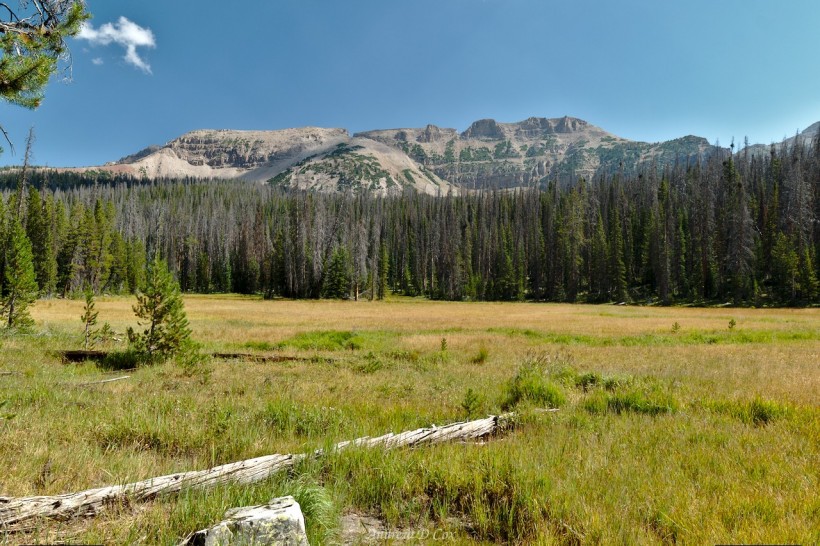
The next several miles along the Highline Trail blur past. The walls of pines, about half of them dead from some invading pest, break every once in a while and offer views of distant mountain ridges carpeted with a similar mix live and dead trees. Around noon, Brian and I arrive at a small creek gurgling through a wide field of stones. Hungry and ready for some rest, we find a nice log to sit on and eat lunch. Since Brian planned the route, I packed the food, mostly the rations I didn’t eat on the Sierra High Route due to my early departure.
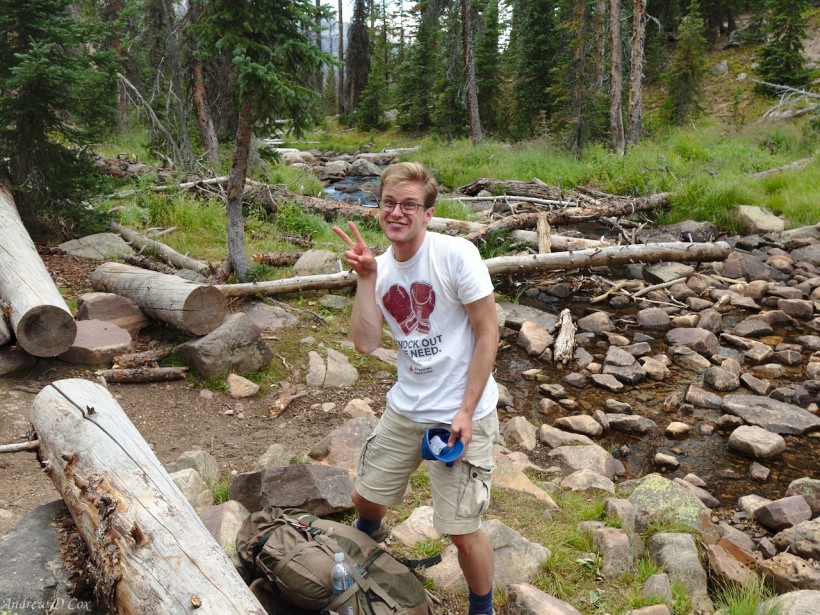
As the sun climbs higher, the temperature increases, but thankfully remains relatively cool. Even though it’s mid-August, the hottest part of the year, our entire route lies above 10,000 feet and the cool mountain air persists. After another hour or two of walking, the tree tunnel thins and we pass through a few small but beautiful meadows. Soon thereafter, we reach Pigeon Milk Spring. Based on the cloudy water trickling from the talus slope, I’m guessing the name is derived from the water itself. Skeptical of the water quality, I don’t try drinking any; I’ve still got plenty of water in my bottles.
Above the spring, a wall of talus and shale blocks our forward progress. Rather than assaulting the slippery slope directly, the trail climbs up a series of rocky benches toward Rocky Sea Pass. The views from the trail grow better and better as we climb above the treetops. Vast grassy meadows interspersed with small piles of shale stretch far into the distance where horizontally-striated peaks tower. Sheer cliffs also protrude above the trees, their sculpted cliff faces recalling memories of cave formations.
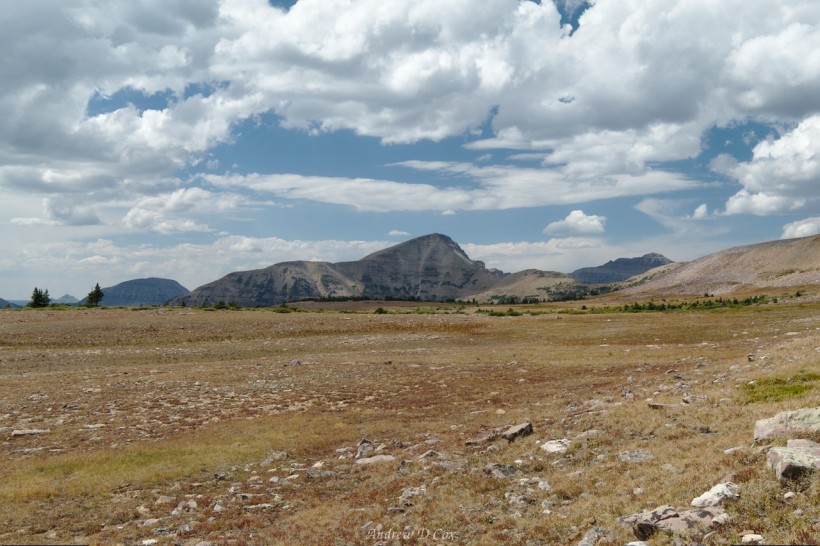
Not far beyond these epic views, Brian and I reach Rocky Sea Pass, a shallow saddle on the rock-strewn ridge. A stiff wind howls past, reducing the air temperature from “comfortably warm” to “chilly.” The views on the eastern side of the past quickly distract us from the cold, however. A massive basin full of pines and over a dozen lakes lie below, with a ring of dramatic peaks encircling the valley. Ouray Lake is down there somewhere, nestled in the trees.
After resting and snacking, Brian and I begin the steep descent into the Rock Creek drainage. Loose rocks all along the trail make for some slippery footing, but we reach the valley unscathed. Below the pass, we stroll past several dusty meadows and a few isolated lakes. A thick layer of clouds overhead blocks most of the hot afternoon sun but also subdues the colors of the trees and grass.
Further down the trail, Brian identifies some wild gooseberries and munches happily on them while we walk. A light drizzle falls for a while; I worry that an afternoon thunderstorm is imminent, but we’re relatively safe below treeline. The drizzle doesn’t last long, thankfully, and patches of blue sky emerge through the clouds.


A few hours later — it seems like an eternity — we reach Ouray Lake. A small herd of elk scatters into the surrounding forest as we near the water. Some searching around the perimeter reveals a few small clearings a short distance from the lake. Most of them are surrounded by a mix of dead and live trees. Camping beneath dead trees isn’t a great idea, but since there are no durable surfaces away from the dead pines, we accept the risk and pitch the tent in one of the clearings.
Dinner is welcome after our long day; I cook the meals with water gathered from the lake while Brian filters more for drinking. Once the food has soaked up the hot water, we dig in. My mood improves considerably with food and I spend the rest of the evening wandering around the lake with my camera, capturing some images of tiny bluebells and the reflections of fluffy clouds in the still lake water.
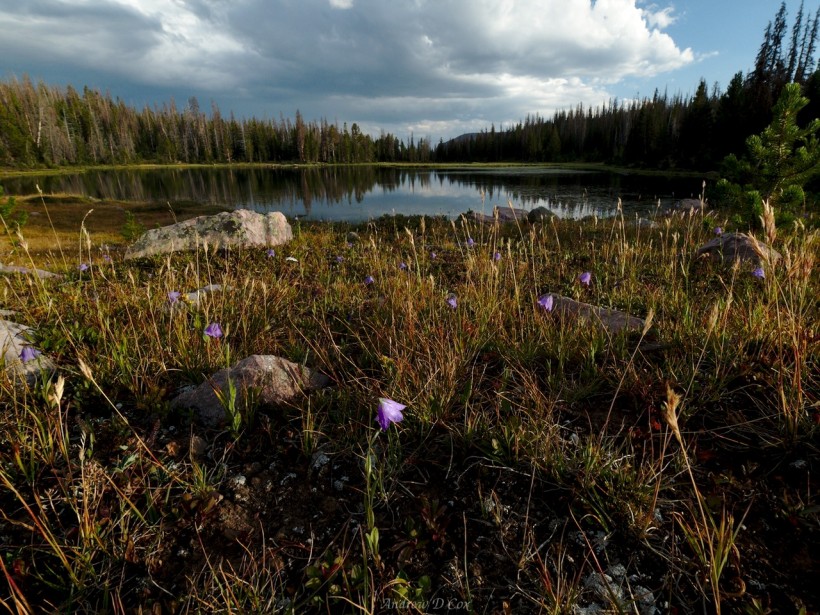
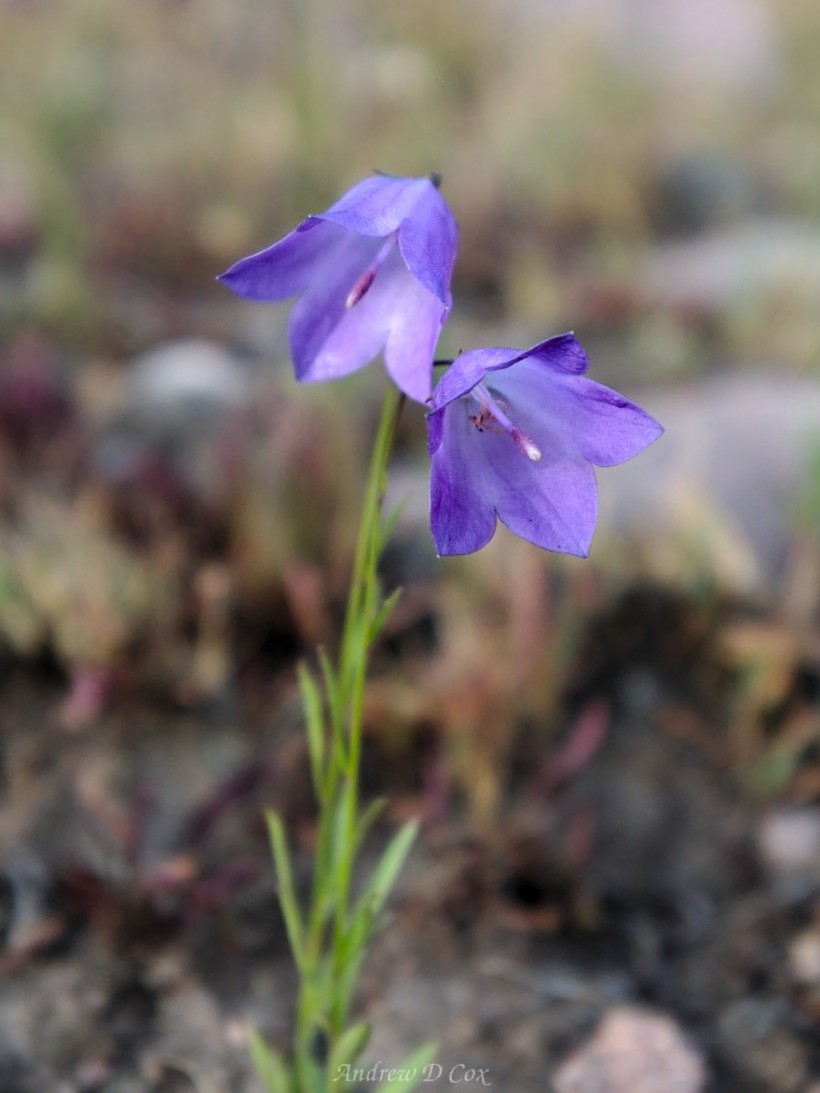
In my experience, thunderstorms strike the mountains in the afternoon and then clear up in the evening. The Uintas apparently like to be unique. As darkness falls, Brian and I notice flashes of light in the distance: heat lightning. Within an hour, the storms reach our shelter beneath the dead pines. Lightning flashes and thunder rolls, but the rain and wind remain relatively light. It’s difficult to sleep with the constant visual and auditory percussion, and I toss and turn until 02:00 when the storms finally pass.

Uinta Plateau Vistas
18 August 2018 | 13.4 mi | +2700 / -2800 ft | View on Map
Despite my restless night, I wake up with the sun. A strange backpacking truth: sleepless nights somehow impact your energy less when you spend the day outside than when you spend the day inside an office. I crawl out of the tent and am greeted by a thin layer of mist hanging over Ouray Lake. The herd of elk we disturbed last night has returned and is grazing on the shore opposite our tent. Quite a nice morning, if you ask me!
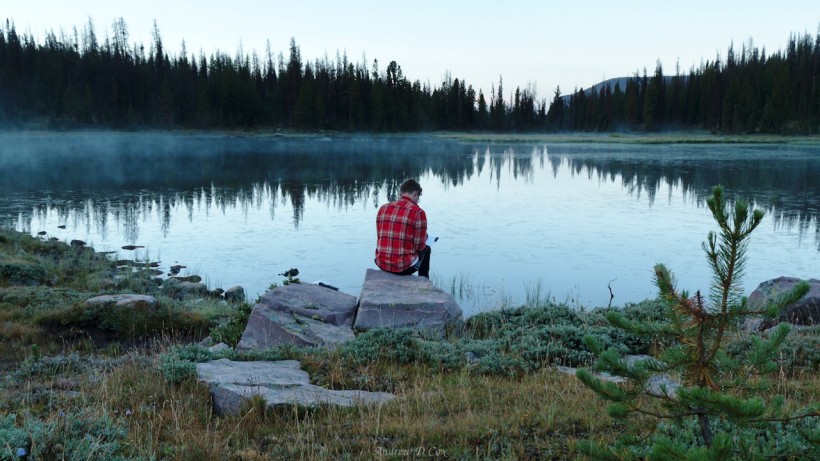
After eating breakfast, Brian and I pack up camp and begin hiking back to the car. The light is much better for photos this morning; yesterday, we trekked under overcast skies, but the clouds are gone today. A layer of smoke still hangs over the valley, obscuring some of the more distant peaks and casting a dull reddish glow on the landscape. It seems like smoke is unavoidable this time of year; it plagued my Sierra High Route trek a few weeks ago and continues to cloud the skies of the western United States.

We don’t let the smoke cloud our sunny moods, however, and cheerfully hike back to Rocky Sea Pass. At the top, we decide to venture off the trail to the plateau above. The ascent consists mostly of slightly loose slate and talus but doesn’t take long. The views from the top of the plateau more than make up for whatever difficulty we endured during the climb. The flat landscape stretches on for miles and inspires ideas of cross-country trips that follow the high plateaus and avoid the dense forests below.
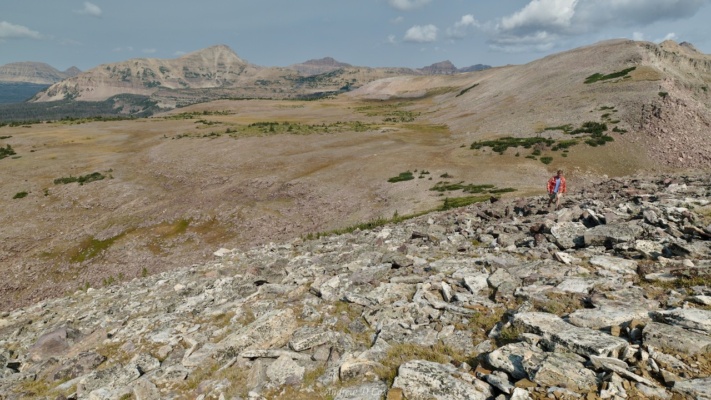
The vistas from the plateau are by far the best we’ve seen so far, so we hang out for a while and explore the plateau. Eventually, after spending at least an hour wandering around the desolate high country, Brian and I clamber back down to the trail at Rocky Sea Pass and make our way back to the parking lot. I’ve enjoyed this weekend in a new mountain range, and backpacking with Brian was certainly a treat.
Until next time, happy trails!
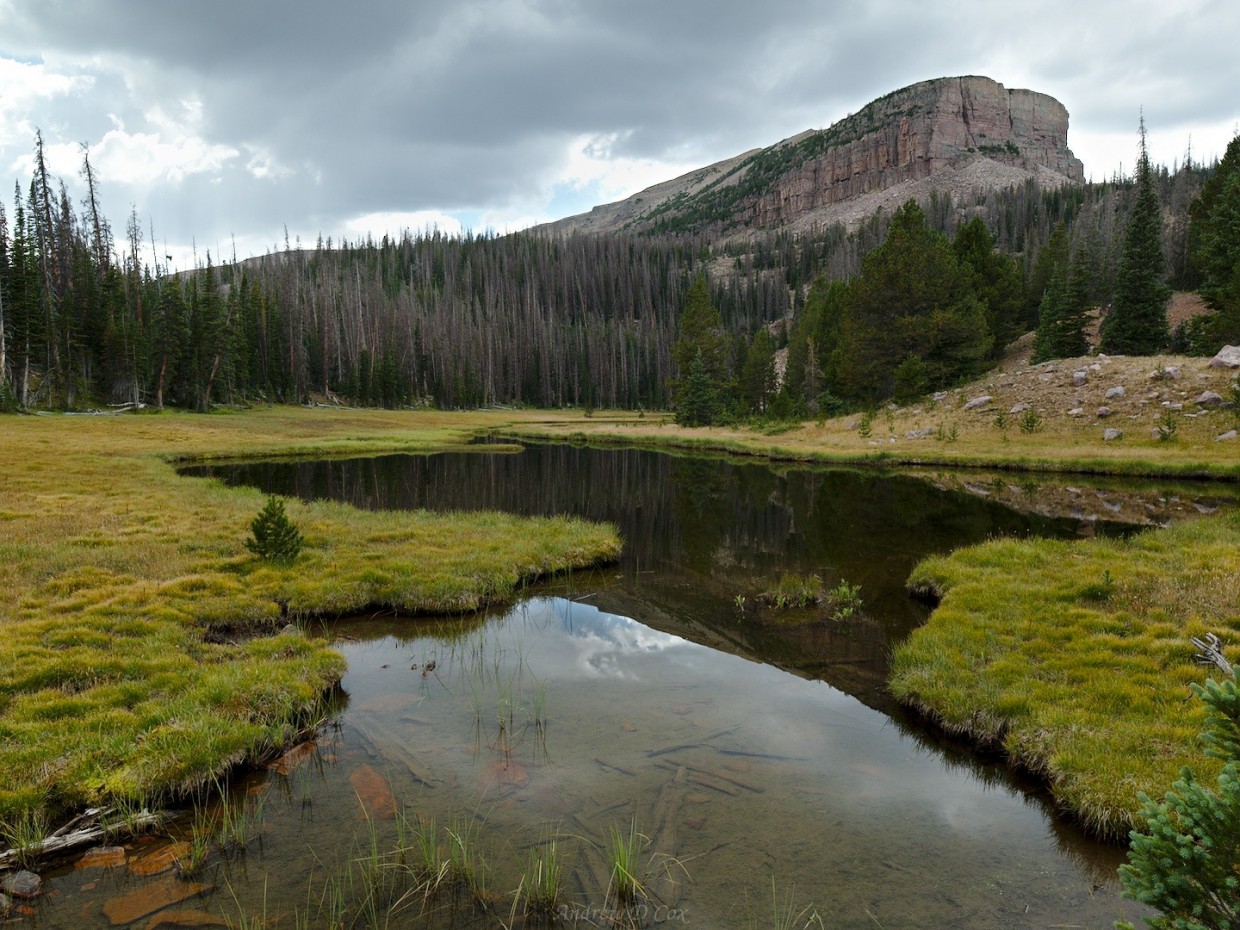


















grandpa 15 October 2018
awesome!!!!!!!